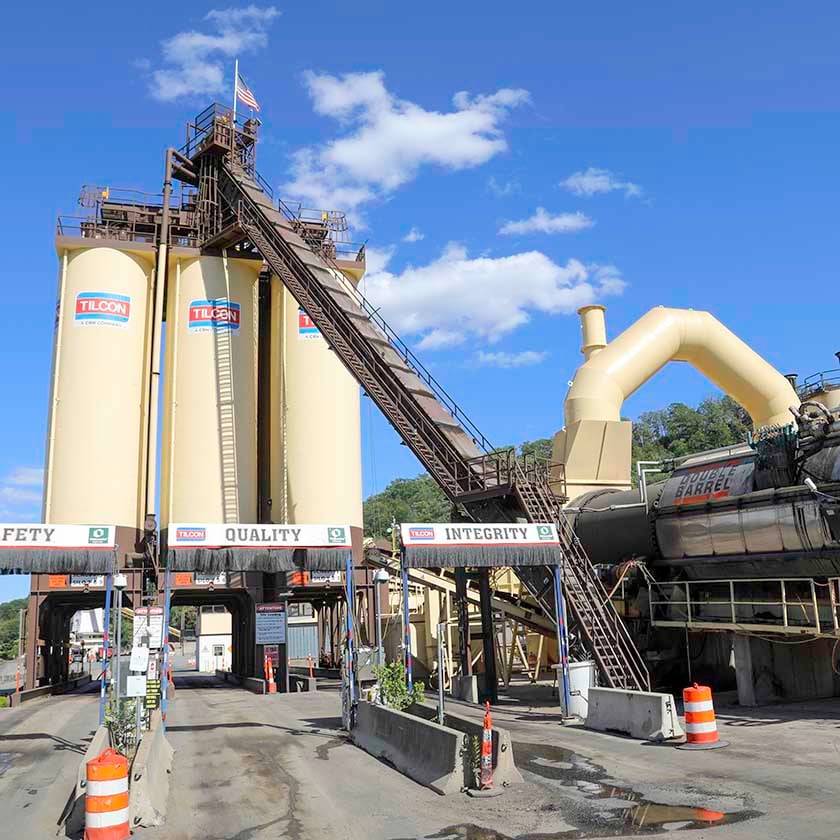Change Your Home's Landscape with Hot Mix Asphalt Paving Excellence
Change Your Home's Landscape with Hot Mix Asphalt Paving Excellence
Blog Article
Unlocking the Secrets of Warm Mix Asphalt Technology
Discovering the depths of hot mix asphalt innovation reveals a globe where specific formulations and careful processes converge to shape our roadways and infrastructure. The blend of accumulations, binders, and fillers isn't simply a construction task yet a tactical orchestration of sturdiness and effectiveness. As we peer right into the complex dancing of components, a tapestry of strength and sustainability unravels. What lies below this surface of asphaltic mastery, and what tricks wait to be unveiled in the realm of paving advancements?
Importance of Hot Mix Asphalt
Hot Mix Asphalt plays an important duty in contemporary framework development due to its longevity and cost-effectiveness. As the most generally utilized leading product for roadways, highways, and car parking lots, Hot Mix Asphalt uses an array of benefits that add to its relevance in building tasks.
The durability of Warm Mix Asphalt stems from its make-up, which includes accumulations, binder, and filler materials that are thoroughly chosen and mixed to fulfill certain efficiency needs. This specific combination results in a solid and adaptable pavement that can withstand constant use without significant damage. In Addition, Hot Mix Asphalt is 100% recyclable, further enhancing its sustainability and ecological benefits. Generally, the importance of Hot Mix Asphalt in framework growth can not be downplayed, as it continues to be a foundation of modern-day building methods.
Parts of Asphalt Mixes
The make-up of asphalt blends consists of thoroughly chosen aggregates, binder, and filler materials that are crucial for accomplishing particular performance needs. Aggregates are the main part of asphalt blends, offering stamina and security. The binder, usually bitumen or asphalt cement, holds the accumulations together and offers adaptability and resilience to the mix.
The mix and proportion of these parts play a considerable duty in identifying the high quality and performance of the asphalt mix. Designers meticulously design the mix to fulfill details requirements, thinking about aspects like traffic quantity, environment conditions, and pavement lifespan. Proper option and harmonizing of accumulations, binder, and fillers are important for creating long lasting, long-lasting asphalt pavements.
Combining and Production Strategies

When the accumulations are picked, the binder, usually asphalt concrete, is added to bind the products with each other. The binder's top quality and amount substantially affect the mix's toughness, resistance, and versatility to environmental aspects. In addition, fillers like moisturized lime or Portland cement might be incorporated to enhance certain characteristics of the asphalt mix, such as its workability or moisture resistance.
Throughout manufacturing, the accumulations and binder are warmed, generally in between 250-325 ° F(121-163 ° C ), to promote blending and make sure proper finishing of the accumulations. The blending process should be thorough to accomplish a homogeneous blend that advertises the desired performance characteristics of the asphalt. Numerous techniques, such as set blending or drum blending, are utilized to attain premium and regular asphalt mixes for construction projects.
Elements Affecting Asphalt Performance
Aspects affecting asphalt efficiency encompass a range of variables that influence the durability, longevity, and overall quality of asphalt pavements. One essential factor is the top quality of products utilized in the asphalt mix.

Ecological problems additionally influence asphalt efficiency. Temperature level variants, wetness seepage, and web traffic loads can all influence the structural integrity of the sidewalk. Layout factors to consider, such as pavement thickness and drain, are crucial in ensuring the lasting efficiency of the asphalt sidewalk. By meticulously thinking about these professionals, designers and variables can optimize asphalt efficiency and enhance the life span of sidewalks.
Lasting Practices in Asphalt Modern Technology
In addition, the development of Going Here warm-mix asphalt (WMA) innovations has obtained grip in the last few years. WMA enables the manufacturing and positioning of asphalt mixes at reduced temperature levels contrasted to traditional hot-mix asphalt, resulting in reduced energy intake and greenhouse gas discharges. The use of porous asphalt blends can aid minimize stormwater overflow issues by permitting water to penetrate via the sidewalk and into the ground, advertising natural water filtering and reenergize procedures. By applying these sustainable techniques, the asphalt sector can add to developing an extra resistant and ecologically pleasant infrastructure network.
Conclusion
To conclude, hot mix asphalt technology plays an important role in contemporary facilities advancement because of its durability and cost-effectiveness. By very carefully balancing components, utilizing appropriate blending methods, and thinking about various aspects, engineers can develop top quality asphalt mixes that hold up against hefty website traffic lots and harsh weather. Accepting lasting practices, such as using recycled materials and warm-mix innovations, better enhances the environmental kindness of asphalt innovation.
Blending and manufacturing strategies in hot mix asphalt innovation involve the accurate combination and processing of accumulations, binder, and fillers to produce a high-performance and sturdy asphalt mix.Elements influencing asphalt performance encompass an array of variables that affect the sturdiness, longevity, and overall quality of asphalt sidewalks. Lasting techniques in asphalt innovation include various initiatives intended at lowering the environmental effect of asphalt production and paving procedures. By incorporating reclaimed asphalt sidewalk (RAP) and recycled asphalt tiles (RAS) into go right here new asphalt blends, the sector can dramatically reduce the consumption of raw materials and power, while additionally reducing landfill waste.
WMA allows for the manufacturing and positioning of asphalt blends at lower temperatures compared to standard hot-mix asphalt, resulting in lowered energy consumption and greenhouse gas exhausts.
Report this page